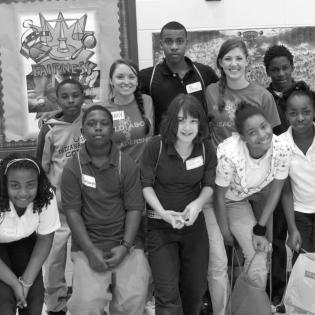Stereotypes
Through an activity with differently wrapped gifts, youth examine the meaning of stereotypes and prejudice. They discuss the importance of respecting diverse voices to avoid stereotyping and prejudice.
The learner will:
- define stereotype, discrimination, and prejudice.
- describe the importance of hearing all voices in a community and respect their right to be heard.
- several items wrapped in varying styles of wrap that may or may not represent the gift inside (pretty package with an undesirable prize or a large box with something small)
In advance of the activity, prepare several packages of various sizes, some wrapped with bows and nice paper, some in brown bags without any color. The desirability of the items inside is not reflected in the wrapping. The packages may include used books, fun finds, stickers, small toys, healthy snacks, rocks, dog biscuits, paperclips, or trash items. Set the prepared packages on a table where everyone can see them.
- stereotype: an oversimplified opinion formed by associating people with a group; an idea that many people have about a thing or group and that may often be untrue or only partly true
- prejudice: a judgment formed about a person or group without enough knowledge
- discrimination: action or treatment based on prejudice, or a preconceived opinion
What are prejudice, stereotype, and discrimination and how do we avoid them?
Instructions
Anticipatory Set:
With the prepared gifts visible on a table, hold a discussion about what might be inside and what hints the outside packaging provides.
Pick people randomly to choose a package to open. They first tell why they picked it. After they open it, they reflect on what they think of what was inside and how it related to the outward first impression. Were they right?
After all the packages are opened, reflect together on how this is a metaphor for prejudice, discrimination, and sterotypes. Discuss how we are harmed by making assumptions about people based on very little information. Define prejudice, discrimination, and sterotypes.
- Does the outside of the package reflect what is inside? Why or why not?
- Did you change your ideas about what makes a good package as people opened their packages up? Why? How does this related to learning more about people?
- How are people we don’t know like packages?
- When we make up our minds about people before we see what is inside, this is an example of stereotyping. Stereotyping involves making broad generalizations or oversimplified statements about others based on very little information. For example, we may look at a picture of a man in a suit and assume that he is a wealthy businessman. Generalizing about people based on their race, gender, or faith is stereotyping. This becomes harmful and can lead to prejudice or discrimination.
Talk about the importance of listening to stories of diverse people in a community and respecting differences. Discuss how this helps overcome prejudice or stereotypes.
Philanthropy Framework
-
Strand PHIL.II Philanthropy and Civil Society
-
Standard PCS 02. Diverse Cultures
-
Benchmark MS.2 Describe the importance of hearing all voices in a community and respecting their right to be heard.
-
-
